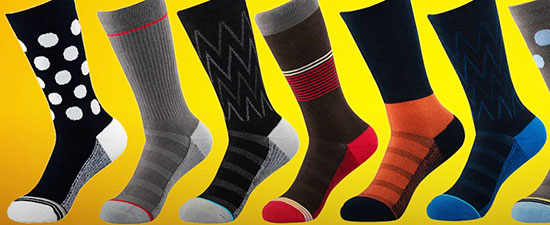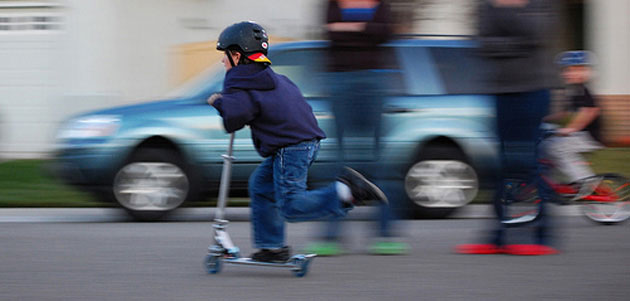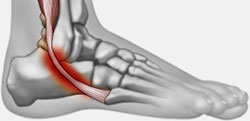- Home
- Foot & Ankle Conditions
- Less Common Conditions
- Peroneal Tendon Injuries
Peroneal Tendon Tear and Dysfunction
- Published 11/1/2023
- Last Reviewed 2/19/2024
In this video, we discuss peroneal tendon injuries and their treatment options.
It can be difficult to distinguish one ankle injury from another. Thankfully, our foot and ankle specialists and orthopedic surgeons are trained trauma experts and have decades of extensive experience in treating ankle tendon injuries, including peroneal tendon injuries. In fact, University Foot & Ankle Institute’s foot and ankle specialists often teach our peroneal tendon repair techniques to other doctors and clinics.
A peroneal tendon tear is when one or both of the bands of tissue in your ankle — the peroneal brevis and peroneal longus — tear as a result of injury or overuse. There are a few different types of tears, and each can vary in level of severity, making it important to receive adequate diagnosis and proper treatment.
- Previous
- Condition
-
Foot and Ankle Surgeon at University Foot and Ankle Institute
Dr. Abimbola Johnson completed his undergraduate degree at Loyola University Chicago, where he played Division II rugby and was also involved in social justice clubs aimed at helping younger students prepare for college.
Upon graduation, he entered Scholl College of Podiatric Medicine, where he served as president of the practice management club and volunteered as coordinator at the Free Foot Clinic in Chicago. He served his residency at Regions Hospital/Health Partners in St. Paul.
Dr. Johnson provides comprehensive medical and surgical care for a wide spectrum of foot and ankle conditions, including common and complex disorders and injuries. The doctor is uniquely qualified to detect the early stages of disease that exhibit warning signs in the lower extremities, such as diabetes, arthritis, and cardiovascular disease.
Dr. Johnson can be seen at our Santa Barbara location
 Great team and surgery. Highly recommendJeff G.
Great team and surgery. Highly recommendJeff G. Terrific…couldn’t be happier!Joan G.
Terrific…couldn’t be happier!Joan G. As usual, the service as staff was excellent.Leroy H.
As usual, the service as staff was excellent.Leroy H. Please provide handicap parkingBarry S.
Please provide handicap parkingBarry S. Dr. Baravarian is an excellent physician that truly understands the industry better than anyone else. I have visited other podi...Paul R.
Dr. Baravarian is an excellent physician that truly understands the industry better than anyone else. I have visited other podi...Paul R. Dr. Ambibola Johnson is awesome!Laurie S.
Dr. Ambibola Johnson is awesome!Laurie S. I appreciate the care and timeliness of all my appointments I’ve had at UFAI. Gray, Lydia and the staff all are wonderful. Lydi...Edelmira G.
I appreciate the care and timeliness of all my appointments I’ve had at UFAI. Gray, Lydia and the staff all are wonderful. Lydi...Edelmira G. Very greatfull for the doctor and stuffJesus M.
Very greatfull for the doctor and stuffJesus M. Doctor was very caringBrigitte S.
Doctor was very caringBrigitte S. I am accident prone and have been using University Foot and Ankle for a number of years. Have seen Dr. Jafary an Dr. Franson. B...Greg K.
I am accident prone and have been using University Foot and Ankle for a number of years. Have seen Dr. Jafary an Dr. Franson. B...Greg K. Everyone is very nice and efficient-
Everyone is very nice and efficient-
Especially Dr Kelman. He takes very good care of me!!Claudia K. Great costumer service.
Great costumer service.
Prompt and efficientDean W.
-
 Listen Now
Can Plantar Fasciitis Socks Relieve Foot Pain?
Read More
Listen Now
Can Plantar Fasciitis Socks Relieve Foot Pain?
Read More
-
 FDA Warns of Serious Risks from Antibiotics to Tendons, Muscle & Joints
Read More
FDA Warns of Serious Risks from Antibiotics to Tendons, Muscle & Joints
Read More
-
 Listen Now
What's Plantar Tendonitis and Why is it Still a "Medical Mystery"?
Read More
Listen Now
What's Plantar Tendonitis and Why is it Still a "Medical Mystery"?
Read More
-
 Listen Now
Have Heel and Knee Pain? It Could Be the Way You Walk
Read More
Listen Now
Have Heel and Knee Pain? It Could Be the Way You Walk
Read More
-
 Listen Now
Toy Scooter Related Injuries: what you need to you know
Read More
Listen Now
Toy Scooter Related Injuries: what you need to you know
Read More
-
 Listen Now
Common Prescriptions and OTC Medications That Affect Your Feet and Certain Foot and Ankle Conditions
Read More
Listen Now
Common Prescriptions and OTC Medications That Affect Your Feet and Certain Foot and Ankle Conditions
Read More








